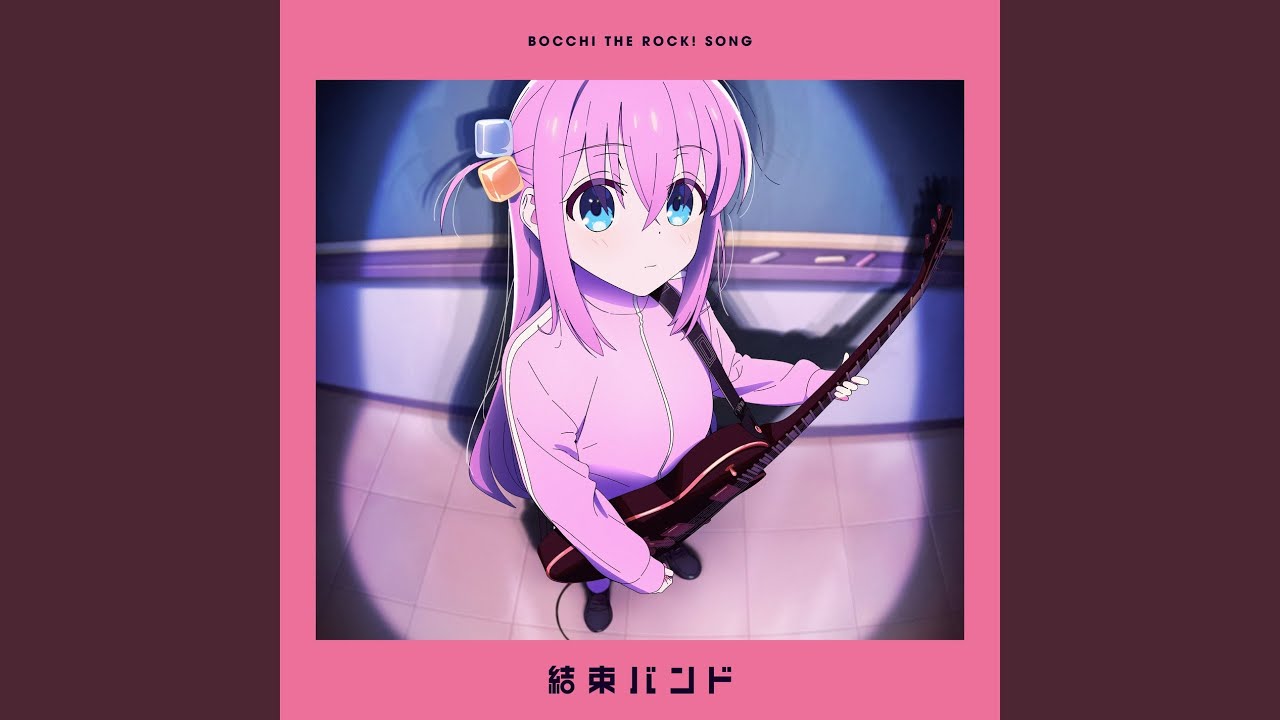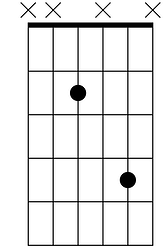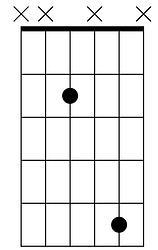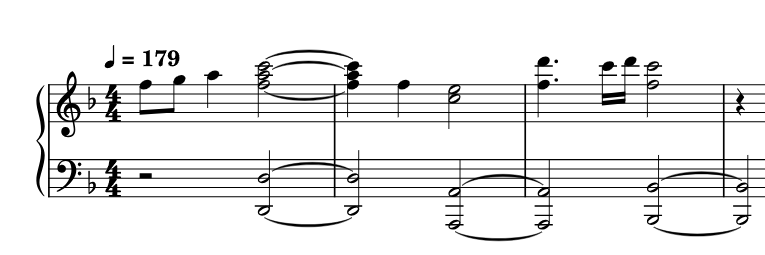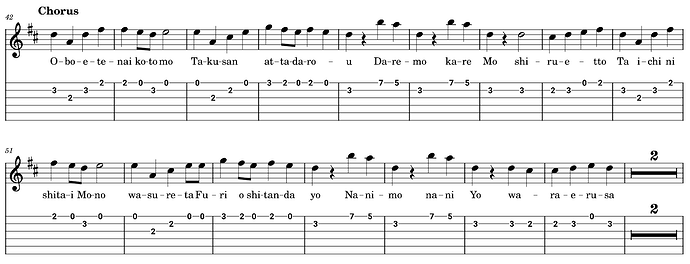> a little pre-amble, and then some actual j-rock/j-pop tips below. feel free to just skip to that
so i’ve been studying how to write j-rock/j-pop music for a few years now, on and off. im pretty casual when it comes to this sort of thing though, i had studied music pretty intensely before university, but i didn’t get to take any classes for it when i did get to uni.
so im not really reading any textbooks on music theory, besides the ones i read back in high school. my main source for learning how to write music nowadays comes from free resources online, and youtube. issue is most youtube tutorials for writing music honestly suck.
A lot of “tutorials” on youtube tend to just be breakdowns of a song that someone wrote. Showing me a clip of your bass guitar part in waveform, with no extra detail on how you wrote it or what you were going for, is not helpful at all lol. Sometimes you’ll get the odd breakdown that at least mentions what chord progression they’re using, but most of these faux-torials will just say “write a cool lead guitar. then add bass. songs done now”. I think it sucks that youtube seems to be overflowed with these when it comes to music, but whatever rant over.
anyways, today i moved a lot of my music-related notes from Microsoft One-note over to Notion. In this process I rewrote a lot of the notes, rewatched a lot of the videos I was studying from, and kinda just caught myself back up to where i used to be.
afterwards i decided to give myself a bit of a challenge. i’m gonna try and analyze as many of the songs from Bocchi The Rock as I can, mostly limited by any already transcribed guitar parts that i can find online. I found that songster/ultimate guitar tabs are pretty good for these, if you can find any tabs. Not sure if theres a good source for Japanese song tabs specifically. I usually cant find any new songs on these sites, but thankfully a lot of youtube covers will share their tabs.
so i started working through Guitar Loneliness & Blue Planet, ive made it partially up to the second verse so far. Compared to when I tried analyzing music before, im making a lot of good progress! so i plan on continuing on with this piece, and maybe moving on to a different one if i get stuck.
>ok real jrock/jpop tips for foreigner scrubs like me
(some chord theory, this assumes you know how to read chords)
the most common tip you’ll find online for writing any japanese song is to use the “Royal Road Chord Progression”, most commonly in the form of IV->V->vi->I, or IV-V-iii-vi etc. of a major key. theres a lot of variations, but generally it involves this IV->V relationship at the start. If you want to watch an actually helpful video talking about this progression, this video by Gavin Leeper is pretty good.
issue is, especially if youre new to writing music, this doesnt really tell you anything. It doesn’t tell you when to use a chord progression, how to write with them, or anything like that. ive seen so many analysis videos start and end with this tip, and its so exhausting how unhelpful it actually is.
So what i’ve found is that this chord progression is pretty good for choruses, sometimes intros. Its not necessarily a verse progression. For a verse, ive noticed a lot of the same kind of progressions you can find in a lot of american emo and punk rock. this is kind of helpful to know, since you can just watch/read guides for American music which is a lot more abundant.
Once you’re writing with this chord progression, its actually pretty tricky! Plopping in this progression wont immediately make your song sound like an anime opening (no matter what the faux-torials tell you), so what else can we do to get that Japanese sound in our music?
The trick with this progression is that its labeled from a Major Key perspective (IV->V->vi->I), which makes sense. When you analyze these songs, it really does lead to a chord that feels like home, it feels like the tonic one chord of that section. The trick is, this major-sounding progression is sometimes inserted into a song that is primarily written in the relative minor. For example, in Guitar Loneliness and Blue Planet from Bocchi the Rock (which ill refer to GLBP), the song is mostly written in F# minor. The vocal part melody starts on F#, resolves on F#, its all centered around F#. The intro is actually in that key’s relative major however, A Major. (ill get more to the intro later). These two keys share the same notes, the same key signature, generally the same sound, but they both carry two different feelings. Major tends to be uplifting while minor tends to be a lot darker.
Most J-Rock songs, ive found, are written in minor keys or otherwise have minor-centric melodies. But more commonly, they’ll ebb and flow between a relative major/minor. Note that this key change is much more subtle compared to any actual movement around the circle of fifths.
the rest of this will be notes from my GLBP analysis. if you’d like to listen along to the song, ive left timestamps for the sections im talking about and here’s also a link to the youtube video.
I would add screenshots of the tab im using, but im using an Ultimate Guitar subscription to view it, so its probably better if I dont screenshot it. you’ll just have to take my word for it.
OK, So that Anime Chord Progression [0:55]
the mostly F# minor song pulls out this major chord progression (IV->V->vi->I), so we’re using the relative major key which is A major as mentioned above.
This means the rhythm guitar is playing D major → E major → F#minor7 → A major. These are mostly using standard shapes, no crazy inversions or extensions, no dominant seventh chord. You could use those, ive seen those before in royal road progressions, but its not present here.
During this, the lead guitar is playing a straight eight-note rhythm in octaves, which is extremely common in j-rock songs of this style. A simple melody, mostly containing notes within the rhythm section’s chords, doubled between two octaves. If you think about this from the live guitarist perspective, this is like playing a power chord shape across three strings, but omitting the five. It’ll usually be one of these shapes (anywhere along the fretboard)
On top of this we have the vocal part STILL in F# minor. This is the crucial step that most people leave out. You should write Minor Melodies over this Major Progression. This creates that melancholic anime sound that most people are looking for when trying to write j-rock songs.
“tarinai, tarinai” repeats this F#, and as it moves to “dare-ni-mo” it uses ‘A’ as a passing tone, leading into B which is the top note on “ni”. Its not the tonic for this melody, even though it is being treated as the tonic in the underlying rhythm section.
As the chorus ends however, we do make a switch into A major, which leaves the melancholy feeling behind as the music emotionally makes us feel like “everything’s gonna be alright”. We end on the A on “dake” and “hoshi-ni” [1:10], finally joining the rhythm guitar in the key of A. While in A major, we make a reprise to the intro section which retains the A major vibe, until we swap into F# minor to reach a repeat of the verse section.
The Intro that we skipped over [0:00] or again at [1:17]
This intro is written with a simple call and response type structure, which we can represent as ABAC. When the intro makes its reprise, the C section (the second response) is different, but everything else stays the same.
The lead guitar riff is built on a couple key things. There’s this Esus4 → E major chord movement, which is followed by a partial scale built off the tonic (the A Major scale), that leads into an octave melody for the B section (the first response). Once again, these octaves are SUPER COMMON! and for any non-guitarists attempting to write guitar leads, you should think of this! Remember, the guitar is a six stringed instrument. It’s not the same as writing for other instruments.
while we’re talking about guitar techniques, there’s a lot of sliding, hammer ons, and pull offs present throughout the entire song for the lead guitar, so try and incorporate those patterns into your songwriting.
[0:09]
In the first version of the intro, we end on this transitional melody from our A Major Key into F# minor, where a majority of the song resides. This is done as the lead guitar creates this riff centered around F# and C#, as we can see the A take a backseat. The riff builds all the way up to the F#, before resolving down to the C#, and then eventually ending on the F# as we finish our transition into the relative minor key, F# minor. In F# minor, F# is obviously the root and C# is the fifth, further informing the change of key.
[1:25]
The second time this section comes around, we instead have this massive scalar run that spans from G# → E, before jumping up to a B at the very top of the guitar’s range at the end. This scale is staying within our A Major / F# minor key, its not chromatic or pentatonic or anything otherwise special.
The Verse Sections [0:13-0:34] & [1:28-1:49]
Here we have our F# minor melody. Built on a fairly simple melody over some two-string palm-muted power chords in the guitar, its a fairly simple J-Rock verse you’ve probably heard a million times before. The palm muted power chords give it this real “emo” feeling, and to me it sounds a lot like the 2000s. Asian Kung-fu Generation has a lot of these verses, and they inspired a lot of Bocchi the Rock (the main characters are named after the members of AKFG, they covered one of their songs, etc). Haruka Kanata by AKFG has verses like this, so if you’re looking for a good way to write a J-Rock verse, try singing something minor over some chunky palm muted power chords.
I havent analyzed enough of these melody parts to give any advice on how to write a good melody, but I’ve noticed that they usually start fairly tight in range, mostly sticking to second or third interval movements, and they tend to be repetitive. Towards the end they’ll open up, increasing the overall range of the part (which includes jumping by a fourth or fifth, moving up and down in pentatonic shapes, etc).
The Key Change [3:02]
Here the song changes from A Major/F# minor to Bb Major/G minor, by raising everything a half-step. This is a fairly common trope you can find in lots of different songs, Western and Eastern. So I wont really talk much more about this, you can look up examples of this technique online. The transition is extremely abrupt, as the vocal part, in isolation, just repeats itself in the new key before all the parts join in during “Kiite, kike yo”.
takeaways:
if you want to write j-rock or j-pop and get that “anime op sound”, checkout the royal road progression. its a major key progression, but you should write this underneath minor key melodies and sandwich it between minor key progressions for verses. these other progressions can be just simple rock progressions. make sure youre writing your guitar parts as if you were a guitarist, try and incorporate power-chord shapes into your melodic lines and throw in some doubled octave lines aswell.
i’ll update this thread with any other tips i get through other songs. lmk if you guys found any of this interesting or confusing, ill try to elaborate. also feel free to fight me on this, music theory isn’t an exact science so maybe there’s another way of seeing things that makes more sense than what i found! Wish i could share sheet music, it would make this discussion waaaay more inviting and clear.
![[Sakamoto, Hisaishi, et. al.] - Common Japanese Chord Progressions](https://tsuki-s3.b-cdn.net/original/1X/c2892f5d5838d3abaf7f340fe0782db7226e0a89.jpeg)
